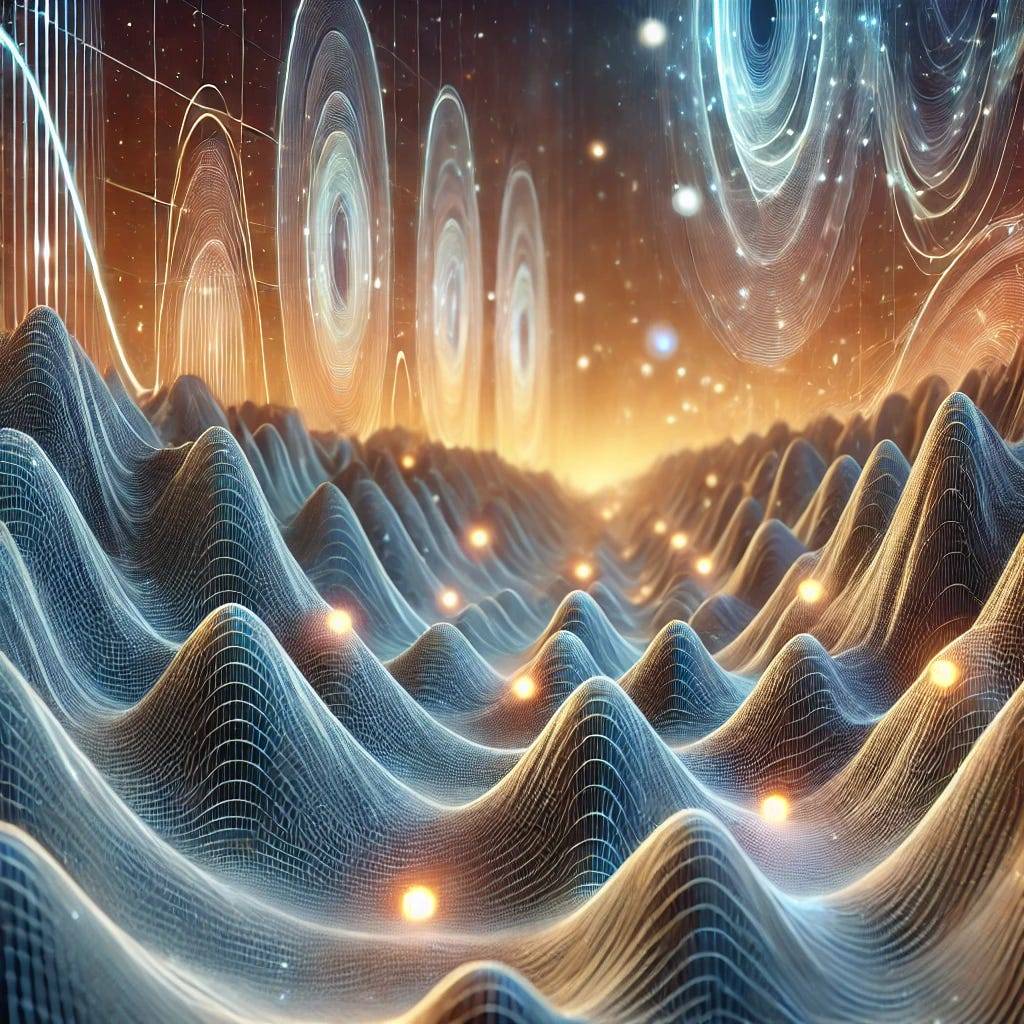
Quantum mechanics is like the rules of a secret world where things behave in strange and exciting ways. Quantum channels are a big part of this world. They help describe how quantum systems — tiny things like atoms — change and interact with their surroundings. Imagine these channels as bridges that connect one quantum state to another. But just like traffic jams on a bridge, there are “bottlenecks” in these channels that can slow things down.
Scientists have now found a way to understand these bottlenecks through something called the quantum bottleneck theorem. This discovery shows why some quantum processes take longer than others and helps explain how quantum systems remain stable at different temperatures. These bottlenecks provide insight into the unique nature of quantum systems, revealing why their behavior is often so different from what we see in the regular world. Let’s dive deeper to see how this idea changes what we know about quantum systems and their surprising behavior.
Understanding Bottlenecks in Quantum Systems
The quantum bottleneck theorem is like a special rule that explains why certain quantum processes are slow. These bottlenecks happen in parts of the quantum system where energy or certain properties get “stuck,” making it hard for the system to fully settle down. They’re like narrow bridges that limit how much traffic can flow through at once.
A key difference between classical (normal) systems and quantum systems is how these bottlenecks work. In classical systems, bottlenecks depend on probabilities — the chance something might happen. In quantum systems, there’s an extra twist: bottlenecks also depend on “coherence.” Coherence is like the wave-like behavior of quantum particles that makes them different from anything we see in everyday life.
Here’s an example: imagine you’re trying to mix two kinds of soup in a pot, but a wall in the middle stops them from blending. In quantum systems, this “wall” is even trickier because it involves not just energy but also the way the particles are connected by their wave properties. Understanding this gives scientists a powerful tool to study how quantum systems behave. With this theorem, researchers can predict why certain systems take a long time to stabilize and how they can control these delays to create better technologies.
Quantum Systems and Their Local Connections
Locality is a simple idea: in quantum systems, things usually affect only what’s close to them. This means that even though a quantum system might be huge, changes happen in small, nearby areas. Scientists use this idea to study bottlenecks by looking at these local connections. Locality acts like a neighborhood rule, ensuring that interactions remain manageable instead of overwhelming the system as a whole.
For example, in certain quantum systems like the Ising model (a model used to study magnets), scientists can find small regions surrounded by “energy barriers.” These barriers are like hills that particles need to climb over to move to a different region. These “hills” slow down changes and create bottlenecks, making it harder for the system to reach a stable state. This process is crucial for understanding how quantum systems evolve over time and why they sometimes get “stuck” in certain patterns.
Here’s a simple table to show the difference between classical and quantum bottlenecks:

By examining these differences, researchers can better understand how quantum systems behave and why locality is a defining feature in shaping their dynamics.
Quantum Phases and Bottlenecks Explained
Bottlenecks don’t just slow things down; they also shape how quantum systems behave at different temperatures. At low temperatures, quantum systems can enter special states called phases. These phases are like different “personalities” of the system, and bottlenecks are key to understanding them. They act as boundaries, keeping the system within certain states and making it hard to move to others.
For instance, some systems have a phase called “spontaneous symmetry breaking,” where the system chooses one of several possible states, like a spinning coin that lands on one side. Bottlenecks can keep the system trapped in these states for a long time, making them more stable. This stability is a valuable feature in areas like quantum computing, where holding information for long periods is essential.
Another example is spin glasses, where particles settle into complicated patterns. These patterns create “rugged landscapes” with many hills and valleys. The quantum bottleneck theorem helps explain why these landscapes cause the system to slow down and take a long time to change. These delays are not just obstacles; they provide critical insights into the natural behavior of quantum systems, showing how they organize themselves in complex environments.
This understanding isn’t just theoretical. It helps scientists design better quantum computers and understand natural processes, like how materials behave in extreme conditions. By leveraging this knowledge, researchers can create more efficient systems and develop new technologies that rely on the unique properties of quantum phases.
How Quantum Channels Work Like Balancing Acts
Quantum channels are like balancing acts where tiny systems adjust to their surroundings, creating stable states similar to how water finds its level. This balance is essential for systems to function predictably.
Coherence: A Quantum Secret Weapon
Coherence makes quantum systems special by letting particles behave like waves, creating patterns that classical systems can’t. This wave behavior leads to fascinating interactions and unexpected results.
The Role of Energy Barriers
In rugged quantum landscapes, high energy barriers slow the mixing process, making quantum systems more predictable over time. These barriers are like protective walls, ensuring stability.
Bottlenecks in Quantum Computers
Quantum computers use bottleneck ideas to manage errors and keep their calculations accurate, paving the way for reliable technology. Without these insights, maintaining precision would be nearly impossible.
Bringing Physics and Algorithms Together
By studying bottlenecks, scientists connect physical laws with computer algorithms, helping to solve tough problems in physics and beyond. This connection bridges theoretical ideas with practical applications.
How Bottlenecks Unlock Quantum Mysteries
The quantum bottleneck theorem is more than a discovery — it’s a new way to think about quantum systems. By revealing how bottlenecks affect stability and speed, it helps scientists unlock the secrets of quantum phases and improve quantum algorithms. These insights open doors to better understanding and harnessing quantum mechanics in both science and technology.
These bottlenecks show us where quantum systems slow down and why, but they also highlight opportunities for breakthroughs in technology and science. They provide a roadmap for researchers to explore new questions and develop innovative solutions. As we continue exploring this quantum world, we’re finding better ways to work with its rules and harness its power for a brighter future. The promise of quantum science is vast, and understanding bottlenecks is a key step toward realizing its full potential.
About Disruptive Concepts
Welcome to @Disruptive Concepts — your crystal ball into the future of technology. 🚀 Subscribe for new insight videos every Saturday!
See us on https://twitter.com/DisruptConcept
Read us on https://medium.com/@disruptiveconcepts
Enjoy us at https://disruptive-concepts.com
Whitepapers for you at: https://disruptiveconcepts.gumroad.com/l/emjml







